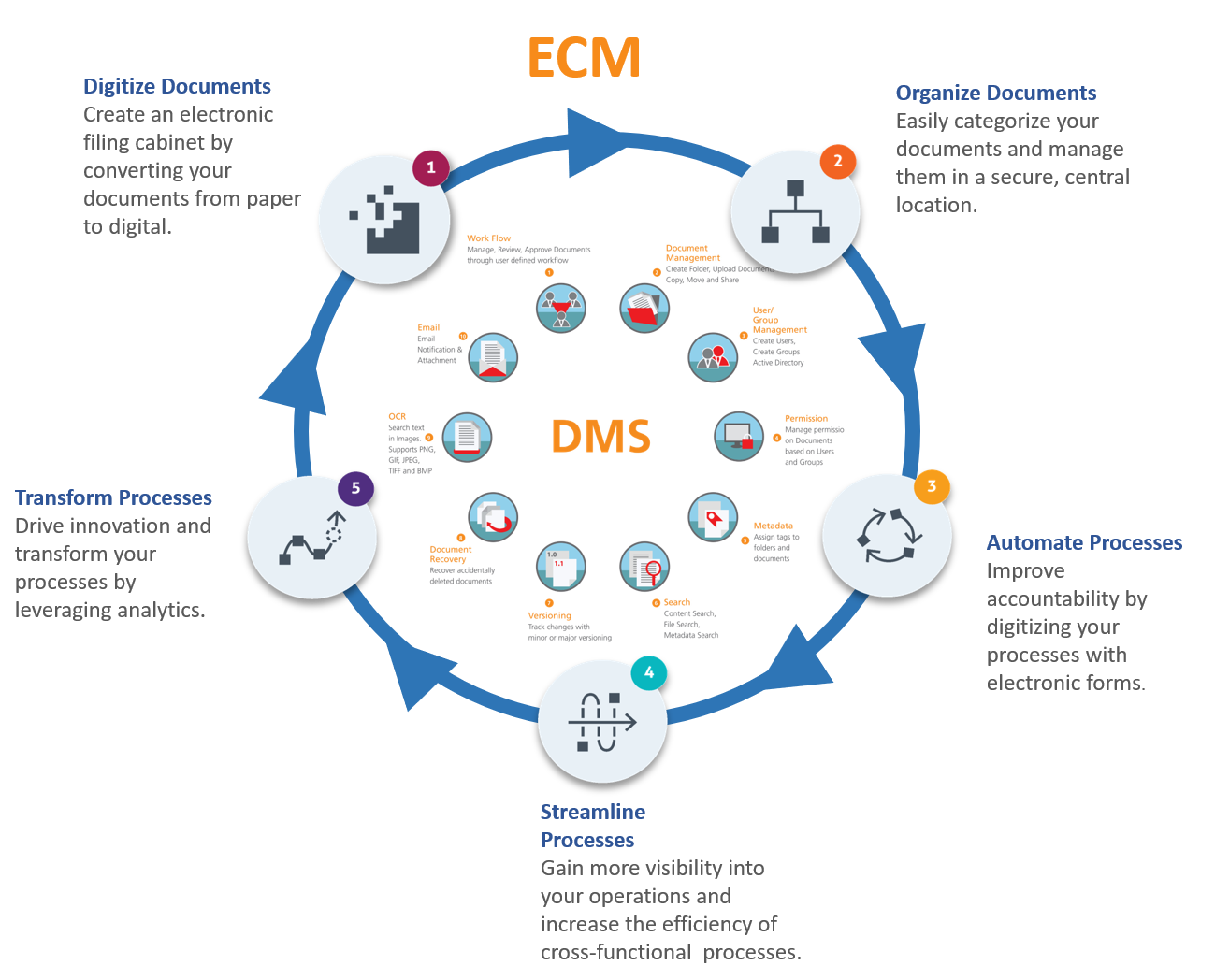What is the Future of ECM - Enterprise Content Management?
Although many analysts have declared ECM to be dead, the future of ECM remains bright. ECM isn't dead; it's merely progressed past its roots.
It has continued to grow from a technical platform into an actionable plan to manage content, just as it did when it first arose from the confluence of numerous technologies a little over two decades ago.
ECM is now defined as the creation and implementation of a business content strategy rather than the deployment of tools. As a result of the lessons learned over the last few decades, the industry has evolved to the point that there are numerous technologies and strategies for achieving ECM goals.
They show how well content management will work for the whole company when it is looked at as a whole.
What is the Current State of ECM?
Today, ECM is a strategy rather than a particular technology. It's probable that no one vendor will be able to provide all of the required technologies. The following is a suite of ECM technologies:
- Transactional content services
- People can work together in collaborative workplaces
- Archival systems for old content
- Federated records management is used to manage records across business platforms.
Content is all over the place. This was previously attributed to the high expense of consolidation. Furthermore, instead of using publicly available repositories, organizations created their own that better suited their purposes. Even if a modern content infrastructure isn't in place, most organizations have a lot of legacy systems that can still work with multiple systems.
Multiple repositories will be a defining aspect of an ECM strategy in the future. There is a requirement for content to be accessible where people work, and no one system can successfully support this. For transactional systems, content services are an excellent solution.
What's the Future of Content Management?
CSPs will continue to back digital transformation efforts, allowing for better content management. There will be federated record management solutions that can manage content in place rather than consolidate it. As machine learning algorithms get better at classifying data without the help of humans, this will become even better.

Deployment of Cloud ECM
The ongoing incorporation of social collaboration tools, as well as advancements in cloud, mobile, and analytics technologies, have raised our expectations for what an ECM product can achieve.
The sheer volume of content generated and saved can be startling, and these technological advancements will drive the demand for enhanced usability and mobility among end-users throughout time. All of these indicators point to cloud deployment as the most efficient way to maximize ECM's efficiency.
Organizations can cut costs by moving their content storage and management to a cloud-based platform. This way, they don't have to spend money on things like hardware and software to get started, and they don't have to pay for people to use the system.
In addition to considerable cost savings, enterprises wishing to increase the ease of use and accessibility of their ECM will find that cloud implementation can help. When you move your ECM tool to the cloud, it becomes even easier for team members to save, retrieve, and apply content either in the workplace or at home.

RICOH Solutions
You have real-time access to information with RICOH's robust cloud-based content management, independent of the platform it was collected on or the business function it belongs to.
Your company's content is managed, shared, distributed, and secured—and it's all available from anywhere, at any time, on any device. It helps to increase productivity, collaboration, and data clarity.
Our content management services provide the following:
- All enterprise content is centralized in one place, making it easy to access what you need.
- Allow teams to communicate and exchange data more effortlessly.
- Automate workflows like reviews and approvals so that processes can move through the phases more quickly.
- Enhance transparency and visibility.
- Provide precise data for analysis.
Takeaways
The correct content management strategy offers you the structure and process control you need to transfer data between different forms and into the hands of those who need it.
Information moves within your organization based on what it is, who needs to access it, and for how long.
News & Events
Keep up to date
- 18Dec
Ricoh recognised as a Top 5 global AV Integrator in SCN Top 50 Systems Integrators 2025
- 11Dec
Ricoh Recognised as a Sustainability Leader in Quocirca's 2025 Report
- 31Oct
Ricoh perovskite solar cells installed on Japan Aerospace Exploration Agency cargo transfer spacecraft1 HTV-X1
- 17Oct
Ricoh recognised among Forbes’ World’s Best Employers 2025
